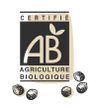
Successful endive cultivation
Endive is a chicory. It does not exist in its natural state. It is obtained by forcing , in the garden or in the cellar from wild chicory. Its cultivation is quite long and demanding but often gives an abundant harvest .
Article Summary
A little history about endive
Latin name : Chicorium intybus
Order : Asterales
Family : Asteraceae
Genus : Chicorium
Species : Endive

The history of endive
History would have it that the endive was invented in 1830, in Belgium during the independence, by a farmer who wanted to hide his chicory harvest in a dark cellar, to avoid seizure. This forcing technique was then taken up and made systematic by Franciscus Bresiers, the head gardener of the Botanical Garden of Brussels. The endive arrived in France in 1873 during the International Horticultural Exhibition in Ghent, with Henri de Vilmorin. It was then presented to the National Horticultural Society of France in 1875. The first endives were sold in France in 1879, at the Halles de Paris, under the name of Brussels endives.
Etymology
The term "endive" comes from the medieval Latin "endivia", derived from the Latin "intibus". Synonyms and other names : Brussels chicory or Witloof chicory, chicon.
Taste
Endive has a subtle, slightly bitter taste.
Nutritional values
Endives are rich in vitamin B9 and are relatively low in calories. They contain an exceptional level of inulin, a sweet-tasting dietary fiber used as a sugar substitute with no adverse effects on blood sugar. Inulin is known to lower blood cholesterol levels. It aids digestion and improves the absorption of minerals such as zinc, iron, and calcium.
Anecdotes
Chicon in "Ch'timi" means "chicory" hence the use of this term in the North to refer to endive.
Main subspecies and varieties
Not just any variety of Chicorium intybus can be used to make endives. Selected varieties must be selected. The following varieties are suitable for producing endives: Witloof Normal, Zoom, Turbo, and Demi-Havetive de Malines.
How to grow endive?
Technical information
- Difficulty level : 1/3.
- Density : 15 to 25 plants/m².
- Life cycle : Perennial behaving as a biennial in our climate.
- Mode of reproduction : Sexual
- Type of pollination : Preferential autogamy but allogamy by insects possible.
- Weight per 1000 seeds : 1.5 g.
Climate and soil
- Climate zone and hardiness : Endive adapts to all French climates and in particular to the climates of northern France.
- Soil type : Rich, loose, fresh and deep soil.
- pH : Neutral soil.
- Moisture : Well-drained soil.
- Exposure : Clear and sunny.
- Temperature : Although endive requires 20°C to germinate, it adapts to all temperatures for the rest of its cultivation.
How to successfully sow?
- Sowing period : From April to July.
- Sowing type : Sow in rows.
- Germination temperature : 20°C
- Need for cold storage : Not necessary.
- Soaking : Soaking seeds aids germination but is not essential.
-
Distancing :
- In the row: 15 cm in the row.
- Between rows: 35 cm between rows.
- Sowing depth : 1 cm deep.
- Rising time : 5 to 12 days.
- Thinning : Thin after emergence to keep only one plant, every 15 cm, in the row.
-
Places and conditions :
- Under cover : Endive is not sown under cover.
- Open ground / without protection : Sow thinly in rows, directly in place from April to July.

Crop maintenance and care
-
Soil preparation : Soil decompaction work is required. Homemade compost can be added to enrich the soil before planting.
- Transplanting : No transplanting is necessary.
-
Watering :
- Frequency: Regular watering.
- Quantity: Moderate watering.
- Period: Throughout the culture.
- Tools : Watering can, hoe and hoe or weeder.
- Weeding : Weed very regularly.
- Hoeing / weeding / ridging / mulching : Regular hoeing is necessary.
- Winter protection : No winter protection is necessary.
- Harvest period : From December to May.
- Part of the plant : The leaves of the endive are eaten.
- Stage : Pick in the morning.

Cultivation techniques
Crop rotation
Wait at least 3 or 4 years to replant endive in the same location.
Companion plants
Endive enjoys the company of carrots, turnips, leeks, and radishes. However, it does not enjoy being around artichokes, tarragon, lettuce, salsify, and Jerusalem artichokes.
Technical gestures
There are two ways to obtain endives, forcing them with or without soil cover:
- To force with soil cover, proceed as follows. Pull up the plants in the fall. If harvesting before the first frost, let the roots "suffer" for a few days on the ground to cause the growth to stop. After removing any roots that are too small or too forked, cut the leaves 1 to 3 cm above the root collar. Then place them side by side in a 30 cm deep trench. Then fill the space between them with soil and water generously. Then cover with 20 cm of soil and a 10 cm insulating layer (with straw or leaves). Finally, install a final protection to ensure relative watertightness: plastic sheeting, metal sheets, or planks.
- For forcing without soil cover, proceed as follows. Rather than in a trench, the roots are "replanted" 5 cm deep in trays filled with sand or potting soil to a depth of 8 to 10 cm, then placed in a dark place (cellar, storeroom, boiler room), at a temperature between 10 and 20°C.
Conservation and storage
- Method : Harvest as needed and do not store.
- Duration : Endives do not keep, consume as quickly as possible.
Uses of endive
- Culinary : Endive can be cooked in a thousand different ways. As an aperitif, use endive leaves as fresh, crisp toast to garnish with vegetable purées (like eggplant caviar) or cream cheese. In salads, the sweet, crisp flavor of endive goes with almost anything. With walnuts, Roquefort cheese, apple, mung bean sprouts, cabbage, citrus fruits, diced ham or avocado, or even cubes of Gruyère cheese. In a gratin, in a slice of ham covered with crème fraîche or béchamel and sprinkled with Gruyère cheese. It can also be pan-fried with onions and wine or prepared as a velouté to accompany mussels. Finally, they can also be steamed to accompany meat or fish.
- Others : In some countries, Para cress is known for its medicinal uses.
Tips and tricks
To obtain endives, the plant must not flower.
Endive diseases and pests
Diseases
The pests
Leaves can be attacked by gray mold. Symptoms can be recognized by softened, brownish leaves and a black center. The fungus (Botrytis), the vector of this disease, thrives in humid environments and between 15 and 20 degrees. Therefore, avoid overly dense sowing and watering at the end of the day. It is also necessary to remove the affected organs and refrain from adding them to the compost because the fungus can persist for several years in the soil.
Monitor slugs throughout the growing season. To get rid of them, spread a layer of ash, coffee grounds, or eggshells, or sow a mixture of slug-repellent flower seeds. A bowl of beer is also an effective trap. Ground-dwelling moths also nibble on endives and attack the first leaves and crowns of lettuce. As soon as the first signs of damage appear, look for and remove the larvae. They often hide under shelters such as wooden planks.





